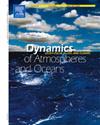Composite analysis of the rainfall distribution caused by strong and weak landfalling tropical cyclones over the China Mainland
IF 1.9
4区 地球科学
Q2 GEOCHEMISTRY & GEOPHYSICS
引用次数: 0
Abstract
Tropical cyclones (TCs) making landfall in China from 2008 to 2016 were grouped into three clusters based on landfall location and movement. The first two clusters made landfall in Southeast China (SEC), moving either northward or westward/northwestward, while the third cluster made landfall in Southern China (SC) and moved westward or northwestward. A statistical analysis examined differences in precipitation distribution and influencing factors. This analysis utilized data from the China Meteorological Administration (CMA) tropical cyclone database, ECMWF ERA-Interim reanalysis data, and CMORPH (Climate Prediction Center Morphing Technique) precipitation data, derived from both station observations and satellite retrievals. The findings reveal significant differences between strong (more intense than a tropical storm) and weak (less intense than a tropical storm) TCs in different clusters. Strong TCs in first cluster (SEC-strong) cause heavy rainfall areas to shift farther north, particularly in Jiangsu Province, with extreme rainfall occurring in the inner rainbands in a relatively symmetrical pattern. Conversely, rainfall from SEC-weak TCs is markedly asymmetric, concentrated in the inner regions and predominantly to the south of the middle rainbands. For SC-weak TCs, intense precipitation is primarily located in the southwest quadrant. Meanwhile, SC-strong TCs display a broader area of heavy rainfall, with coverage extending further west compared to SC-weak. A dynamic composite analysis of the primary weather systems influencing rainfall distribution before and after landfall was performed for SEC-strong, SEC-weak, SC-strong, and SC-weak TCs. This analysis highlighted significant differences in the positioning of the South Asian High (SAH), the intensity of vertical wind shear (VWS), and the characteristics of moisture convergence zones. Specifically, SEC-strong TCs exhibit a more robust water vapor transport channel, with easterly winds delivering moisture to the northern side of the TC center, compared to SEC-weak. Differences are also evident in their vertical structures, including variations in warm-core intensity, radial vertical motion, the asymmetric distribution of convergence and divergence fields, and instability conditions. Similarly, SC-strong and SC-weak TCs differ in the positioning of the 500 hPa subtropical high and the distribution of integrated atmospheric precipitable water (PW).
强、弱登陆热带气旋对中国大陆降水分布的综合分析
根据登陆位置和移动方向,将2008年至2016年在中国登陆的热带气旋(tc)分为三组。前两个集群在中国东南部(SEC)登陆,向北或向西/西北移动,而第三个集群在中国南方(SC)登陆,向西或西北移动。统计分析了降水分布和影响因素的差异。该分析利用了中国气象局(CMA)热带气旋数据库、ECMWF ERA-Interim再分析数据和CMORPH(气候预测中心变形技术)降水数据,这些数据来自气象站观测和卫星检索。研究结果揭示了不同集群中强(比热带风暴更强烈)和弱(比热带风暴更弱)tc之间的显著差异。第一簇强tc (SEC-strong)导致强雨区向北移动,特别是在江苏省,极端降雨以相对对称的模式发生在雨带内部。相反,来自sec -弱tc的降雨明显不对称,集中在内部区域,主要集中在中间雨带的南部。对于sc -弱tc,强降水主要位于西南象限。与此同时,sc -强tc的强降雨范围更广,覆盖范围比sc -弱tc向西延伸更远。对强sec、弱sec、强sc和弱sc台风登陆前后影响降雨分布的主要天气系统进行了动态综合分析。南亚高压(SAH)的位置、垂直风切变(VWS)的强度以及水汽辐合带的特征都存在显著差异。具体来说,与弱sec相比,强sec的TC表现出更强大的水汽输送通道,东风将水汽输送到TC中心的北侧。它们在垂直结构上的差异也很明显,包括暖核强度的变化、径向垂直运动、辐合场和发散场的不对称分布以及不稳定条件。同样,sc强tc和sc弱tc在500 hPa副热带高压的位置和大气综合可降水量(PW)的分布上也存在差异。
本文章由计算机程序翻译,如有差异,请以英文原文为准。
求助全文
约1分钟内获得全文
求助全文
来源期刊

Dynamics of Atmospheres and Oceans
地学-地球化学与地球物理
CiteScore
3.10
自引率
5.90%
发文量
43
审稿时长
>12 weeks
期刊介绍:
Dynamics of Atmospheres and Oceans is an international journal for research related to the dynamical and physical processes governing atmospheres, oceans and climate.
Authors are invited to submit articles, short contributions or scholarly reviews in the following areas:
•Dynamic meteorology
•Physical oceanography
•Geophysical fluid dynamics
•Climate variability and climate change
•Atmosphere-ocean-biosphere-cryosphere interactions
•Prediction and predictability
•Scale interactions
Papers of theoretical, computational, experimental and observational investigations are invited, particularly those that explore the fundamental nature - or bring together the interdisciplinary and multidisciplinary aspects - of dynamical and physical processes at all scales. Papers that explore air-sea interactions and the coupling between atmospheres, oceans, and other components of the climate system are particularly welcome.
 求助内容:
求助内容: 应助结果提醒方式:
应助结果提醒方式:


